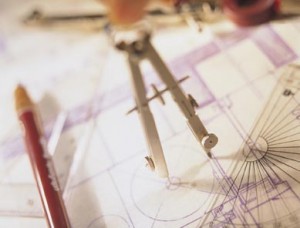
The latest ABI was positive for the fourth in a row, indicating increased activity in the design sector of construction.
The Architecture Billings Index (ABI), a leading economic indicator of future construction activity, reported positive numbers yet again in February, marking the fourth straight month that the index has been in such territory, according to the most recent press release from the American Institute of Architects (AIA).
A representation of architectural activity, the ABI for February rose ever so slightly to 51; any number above 50 indicates an increase in billings, or, heightened demand for design services. In addition, the new projects inquiry index, a separate measure, was 63.4, a modest increase from the 61.2 of January that brings the index to its highest total since July 2007.
Operating on a nine to 12 month lag between architecture billings and construction spending, the ABI’s recent increases bode well for future construction activity, said Kermit Baker, the AIA’s chief economist, though some challenges still persist.
“This is more good news for the design and construction industry that continues to see improving business conditions,” Baker said. “The factors that are preventing a more accelerated recovery are persistent caution from clients to move ahead with new projects, and a continued difficulty in accessing financing for projects that developers have decided to pursue.”
Regionally, the Midwest continued to show the most national activity with an index of 56, up from 53.7 in January, while the South declined somewhat to 51.3 from 51.6. The index’s sector breakdown, though, was a bit different from months prior, which had been dominated by the multifamily sector. Though multifamily billings were still positive at 53.3, the commercial and industrial sector, which includes hotels and office buildings, was leading the pack in February at 55.1.
In comments on the index, Bill McBride at Calculated Risk predicted the lag time in the ABI’s readings may indicate a stabilization of investment in the middle of 2012.
“According to the AIA, there is an ‘approximate nine to twelve month lag time between architecture billings and construction spending’ on non-residential construction,” McBride wrote. “So this suggests further declines in CRE investment in early 2012, but perhaps stabilizing mid-year.”
